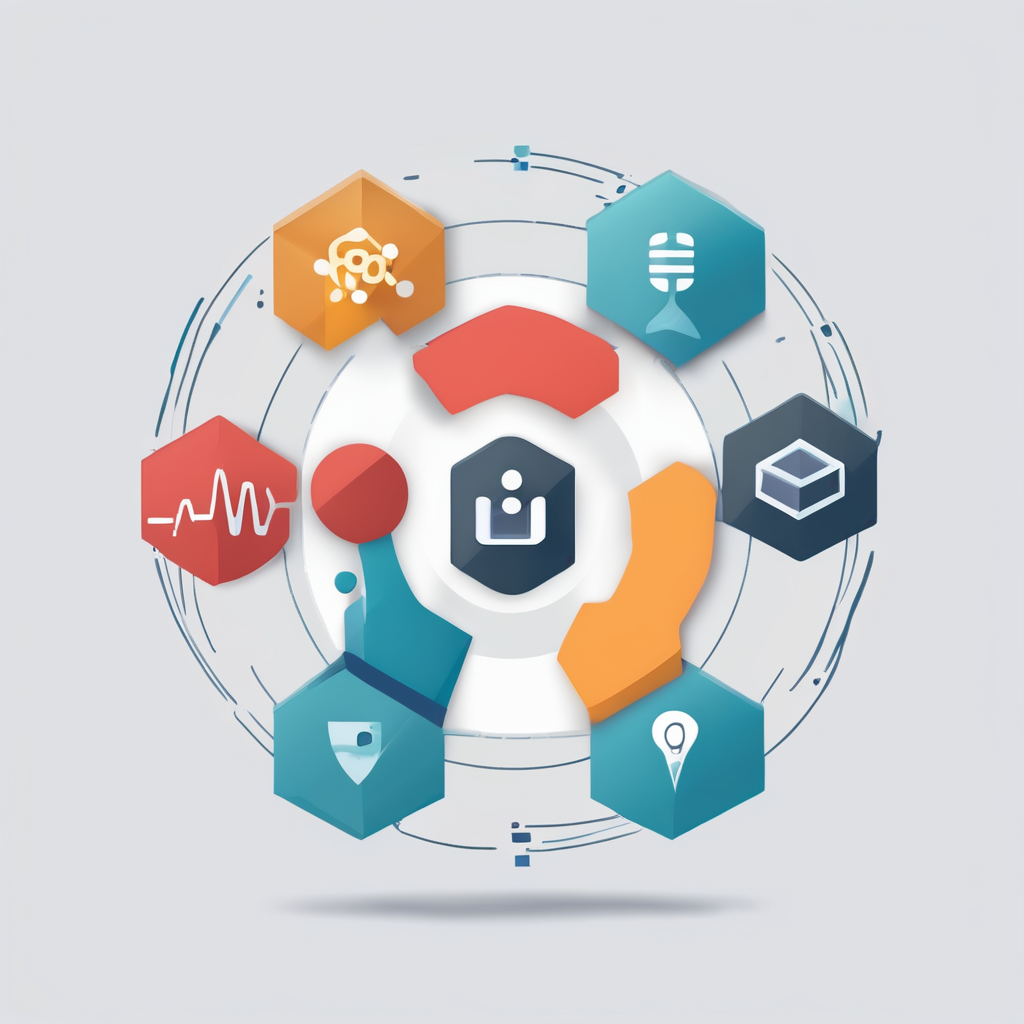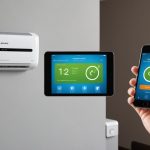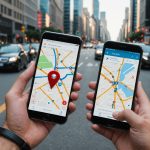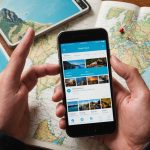Mastering Real-Time Traffic Alerts: Unlock Your Smartphone’s Potential for Instant Updates!
In today’s fast-paced world, navigating through congested roads can be a daunting task, especially without the right tools. Your smartphone, however, is more than just a communication device; it can be your ultimate navigator, providing real-time traffic alerts to ensure you reach your destination efficiently. Here’s how you can unlock your smartphone’s potential to receive instant traffic updates and make your daily commute smoother.
Understanding the Power of Real-Time Traffic Data
Real-time traffic data is the backbone of modern navigation systems. Apps like Google Maps, Waze, and others leverage this data to provide users with the most accurate and up-to-date traffic information. This data is collected from various sources, including GPS devices, traffic cameras, and even user reports.
In the same genre : Mastering Smart Home Comfort: Your Guide to Managing Air Conditioning Units with Your Smartphone
How Real-Time Traffic Data Works
Real-time traffic data works by aggregating information from multiple sources. Here’s a breakdown of how it functions:
- GPS Devices: Many drivers use GPS devices or mobile apps that report their location and speed. This collective data helps in understanding traffic patterns and congestion points.
- Traffic Cameras: Strategically placed traffic cameras provide visual feedback on road conditions, helping to identify bottlenecks and accidents.
- User Reports: Apps like Waze allow users to report traffic incidents, road closures, and other hazards, which are then shared with the community in real-time.
- Machine Learning: Advanced algorithms and machine learning techniques analyze this data to predict traffic conditions and suggest the best routes.
Setting Up Your Smartphone for Real-Time Traffic Alerts
To get the most out of real-time traffic alerts, you need to set up your smartphone correctly. Here are some steps to follow:
This might interest you : Crafting and Sharing Engaging Travel Itineraries: Your Ultimate Guide to Smartphone Magic
Choosing the Right App
There are several apps available that offer real-time traffic updates. Here are a few popular ones:
| App Name | Key Features |
|---|---|
| Google Maps | Real-time traffic updates, route optimization, voice commands |
| Waze | User-reported incidents, real-time traffic, social media integration |
| Apple Maps | Real-time traffic, public transit information, Siri integration |
| HERE WeGo | Real-time traffic, public transit, bike routes |
Configuring Your App Settings
Once you’ve chosen an app, it’s crucial to configure the settings to receive the most relevant and timely updates.
-
Enable Push Notifications: Ensure that push notifications are enabled for your chosen app. This will alert you to traffic conditions, road closures, and other important updates.
“`plaintext -
Go to your app settings.
-
Navigate to the notifications section.
-
Enable push notifications for traffic updates.
“` -
Customize Your Route Preferences: Most apps allow you to customize your route preferences, such as avoiding tolls or highways.
“`plaintext -
Open your navigation app.
-
Go to settings or preferences.
-
Select your route preferences.
“` -
Use Voice Commands: Voice commands can be incredibly useful while driving, allowing you to interact with your app hands-free.
“`plaintext -
Enable voice commands in your app settings.
-
Use commands like “Hey Google, navigate to work” or “Siri, take me home.”
“`
Enhance Your Navigation Experience with Additional Features
Beyond basic navigation, there are several features that can enhance your experience and make your commute more efficient.
Integration with Other Devices and Services
Many navigation apps integrate seamlessly with other devices and services, such as smart home devices or social media platforms.
-
Smart Home Integration: Apps like Google Maps can integrate with smart home devices, allowing you to control your home environment while on the go.
“`plaintext -
Link your smart home account to your navigation app.
-
Use voice commands to control your home devices.
“` -
Social Media Sharing: Some apps, like Waze, allow you to share your ETA with friends or family via social media.
“`plaintext -
Enable social media sharing in your app settings.
-
Share your ETA with contacts.
“`
Utilizing Cloud Storage and Data Syncing
Cloud storage and data syncing can ensure that your navigation data is always up-to-date and accessible across all your devices.
- Google Drive Integration: Google Maps integrates with Google Drive, allowing you to access your navigation history and preferences across devices.
“`plaintext - Link your Google Drive account to your Google Maps app.
- Access your navigation data from any device.
“`
Tips and Tricks for Optimizing Your Navigation Experience
Here are some practical tips and tricks to help you get the most out of your navigation app:
Optimize Battery Life
Navigation apps can consume a lot of battery power, especially when using GPS. Here are some tips to optimize battery life:
-
Adjust Screen Brightness: Lowering the screen brightness can significantly reduce battery consumption.
“`plaintext -
Go to your phone settings.
-
Adjust the screen brightness to a lower level.
“` -
Use Battery-Saving Modes: Enable battery-saving modes to limit background data usage.
“`plaintext -
Go to your phone settings.
-
Enable battery-saving mode.
“`
Customize Notifications
Customizing notifications can help you stay focused on the road while still receiving important updates.
- Prioritize Essential Alerts: Ensure that only essential traffic alerts are pushed to your device.
“`plaintext - Go to your app settings.
- Customize notification preferences to prioritize essential alerts.
“`
Use Automation Apps
Automation apps like IFTTT or Tasker can automate tasks related to your navigation, such as turning on Wi-Fi when you reach a certain location.
- Automate Wi-Fi Connectivity: Use automation apps to turn on Wi-Fi when you reach home or work.
“`plaintext - Download an automation app.
- Create a recipe to turn on Wi-Fi based on your location.
“`
Real-World Examples and Anecdotes
Here are a few real-world examples of how real-time traffic alerts can make a significant difference in your daily commute:
Avoiding Traffic Congestion
Imagine you’re heading to work on a busy Monday morning. Without real-time traffic alerts, you might find yourself stuck in a traffic jam. However, with an app like Google Maps, you can receive real-time updates and be rerouted to avoid congested areas.
"I was heading to a meeting in downtown during rush hour. Google Maps alerted me to a major traffic jam ahead and suggested an alternative route. I saved at least 30 minutes of travel time," says Sarah, a frequent commuter.
Enhancing Customer Satisfaction
For businesses that rely on delivery services, real-time traffic updates can significantly enhance customer satisfaction. By providing accurate ETAs and navigating through the most efficient routes, delivery drivers can ensure timely deliveries.
"We integrated real-time traffic updates into our delivery system, and it has drastically improved our delivery times. Our customers are much happier now," says John, a logistics manager.
Mastering real-time traffic alerts is not just about using an app; it’s about optimizing your entire navigation experience to make your daily commute smoother and more efficient. By choosing the right app, configuring your settings correctly, and utilizing additional features, you can ensure that you reach your destination on time, every time.
Here are some key takeaways to remember:
- Choose the Right App: Select an app that fits your needs, whether it’s Google Maps, Waze, or another navigation tool.
- Configure Your Settings: Enable push notifications, customize your route preferences, and use voice commands to enhance your experience.
- Integrate with Other Devices: Link your app with smart home devices, social media platforms, and cloud storage services for a seamless experience.
- Optimize Battery Life: Adjust screen brightness, enable battery-saving modes, and use automation apps to extend your battery life.
- Customize Notifications: Prioritize essential alerts to stay focused on the road.
By following these tips and tricks, you can unlock your smartphone’s full potential for real-time traffic updates and make your daily commute a breeze. So, the next time you’re on the road, remember that your smartphone is more than just a device – it’s your trusted navigator.











